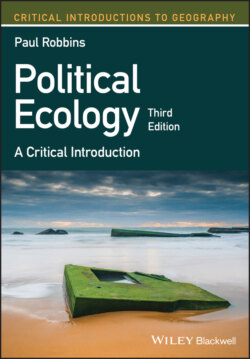Читать книгу Political Ecology - Paul Robbins - Страница 40
Box 2.2 Cultural Ecology as Political Ecology in Judith Carney's Black Rice
ОглавлениеIn Black Rice, Judith Carney offers a rigorous historical mapping of the diffusion of rice (Oryza glabberima) from the flooded fields of pre‐colonial West Africa to the antebellum plantations of North America, where it became the largest cash crop of the pre‐Civil War period. This empirically rich project is most remarkable because it does the radical work of a postcolonial political ecology using the very traditional tools of cultural ecology. As Carney explained to me in 2010, her sources of inspiration were vast and eclectic, including Carl Sauer and Alfred Crosby on the significance of intercontinental species transfers in world history; Karl Marx, Karl Polanyi, peasant studies; and Michel Foucault. Scholarly literature on resistance brought her to slavery studies. But her central impetus was the depth of poverty and hunger in contemporary sub‐Saharan Africa and her story parallels those of Africanist scholars like Michael Watts to engage its historical roots.
In the process, Carney's study turns Eurocentric diffusionist notions on their heads and shows the contributions of non‐Euro‐Americans (enslaved Africans!) to the environmental history of global knowledge and genetic exchange. West African rice production likely supported vast populations in the region into the sixteenth century, a hugely successful agroecology that ironically made it a target for slavers. Concomitantly, the success of American plantations, populated by Europeans with little or no reliable knowledge of subtropical production, depended entirely on seizing and capitalizing on African rice production knowledge – the knowledge of the enslaved.
“I had spent a great deal of time researching agriculture and environmental issues in West Africa and in African‐descended regions of Latin America,” Carney explains. “I became increasingly stunned by the lack of research attention to African contributions in shaping land use in the Americas.” Indeed, the complex linkages of indigenous and African knowledge have long been under‐appreciated, especially in the Caribbean where native populations had been exterminated.
“Africans emerged as the custodians of Amerindian knowledge systems. In effect, two tropical food systems merged in plantation societies, which offered the enslaved a profound understanding of food, medicinal, and environmental resources that would abet their survival and resistance.”
In this way, the power of Carney's story in both contributing to, and inverting, diffusionist history is profound.
